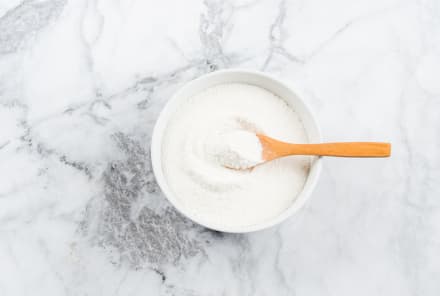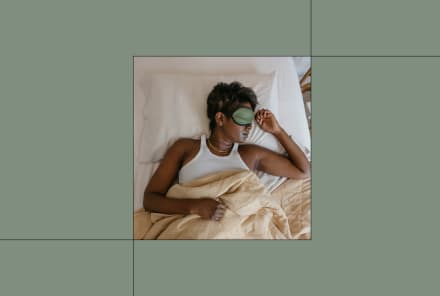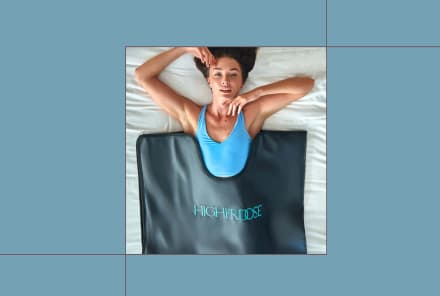Advertisement
Health Micro-Metrics Are On The Rise — Here's What That Could Mean For Our Health In 2021

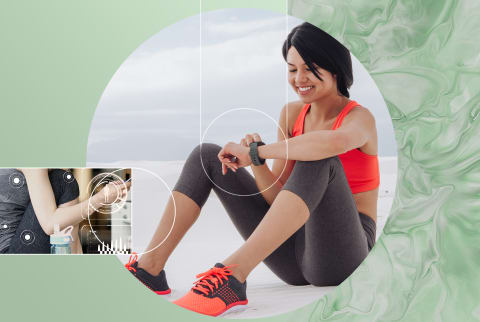
Remember when the biggest excitement of fitness trackers was monitoring your step goal? While those steps are still as important as ever (regular movement is key, after all), fitness watches and trackers have made significant technological strides, releasing new advances each year—and in 2021, things will get even more granular.
In the last year, we saw a tremendous boom in new health micro-tracking features across wearable brands—a trend we have no doubt will continue in 2021. The new Fitbit Sense tracks skin temperature variation, Garmin's watches now measure pulse oximetry, the Apple Watch Series 6 has a blood oxygen sensor, Nutrisense and Levels launched continuous glucose monitors (CGM), and the new Amazon Halo wearable even determines body composition—just to name a few.
Other health-minded brands like Oura and Whoop specialize in advanced recovery insights, based on metrics like heart rate variability, respiratory rate, and sleep. This year, they even caught the attention of professional sports teams. The NBA and WNBA teamed up with Oura to help promote the health and safety of their players, including potentially catching early signs of COVID-19 during their season, such as body temperature changes. Whoop similarly partnered with NFLPA to help players optimize their health and performance. "NFL players have used Whoop to improve their sleep and recovery," says Will Ahmed, founder and CEO of Whoop. "Especially this year during COVID-19, they've used Whoop to monitor their respiratory rate." (It's also worth noting that Whoop raised $100 million in funding this October and is now valued at $1.2 billion.)
While this type of data was once reserved for elite athletes or medical facilities—it's exciting to see more and more health and tech brands make these metrics accessible to the general public. (After all, it's pretty cool that you can get the same level of recovery insights that NBA players do.)
At mbg, we're fascinated by these micro-metrics, particularly because they can contribute to metabolic health. Based on the rollout of new tracking capability throughout 2020, we expect to see even more general interest in personal biometrics monitoring in the coming year.
What is the benefit of understanding these biometrics?
In a time when monitoring your health is more important than ever, having these unique metrics at your fingertips can be pretty beneficial. "This is described as biofeedback-assisted lifestyle interventions, which means people are using these [wearables] to gain better insight into how their bodies work in real-time," says personalized medicine physician Molly Maloof, M.D.
These insights can be incredibly valuable, particularly for individuals who aren't as acutely aware of their body signals. "People will eat foods that make them feel unwell or engage in stressful situations that they don't realize are affecting them biologically," says Maloof. "Using wearables to monitor your sleep, stress, metabolism, and movement enables you to observe the main lifestyle metrics that affect health."
Trackers also allow us to link subjective experiences with the quantitative data, says Casey Means, M.D., a health-optimizing physician and co-founder of Levels. "Having awareness of these signals originating within the body (like one's heartbeat) has been associated with better physical and mental health outcomes1 and even increased motivation2," she says. Getting more in touch with various body signals has also "been hypothesized to be important in [managing] chronic pain3, high blood pressure, gastrointestinal disorders4, mood and anxiety disorders, addiction, and even asthma."
How can these data points support health goals?
Having an influx of granular metrics is a start, but actually applying this data to make incremental change is where experts see major opportunity.
"Wearables that provide continuous data streams about health metrics can be powerful for supporting personal decision making and healthy behavior change," says Means. "Lasting behavior change is facilitated by 'closed-loop systems,' whereby an action is supported by specific feedback and we can directly attribute a choice with a direct consequence. For behavior change, the more immediate that closed-loop feedback is, the better."
Take stress, for example. "Essentially stress drains your batteries, and sleep recharges your batteries, as well as exercise and eating healthy foods," says Maloof. "When we're so stressed out all the time and we don't sleep well, we don't recharge our batteries properly and we start putting our bodies under risk of burnout." While these devices won't tell you exactly what's triggering your stress, they might help you become more aware of days when it's peaking, to help you uncover the root cause.
Or, the data may simply help you make informed choices on days that are ideal, mentally and physically, for challenging yourself or for taking it easy—Oura's "Readiness Score" feature is a good example of this. "Each morning you'll receive an aggregated health metric coupled with personalized guidance signaling whether your body needs to take it easy or if you're primed to hit the court or the gym," says Oura CEO Harpreet Rai. "Our users have found that it's a powerful motivator to understand whether that late afternoon coffee, working late at night, or that relaxing sauna hurts or helps their Readiness score." Here's what that guidance looks like:
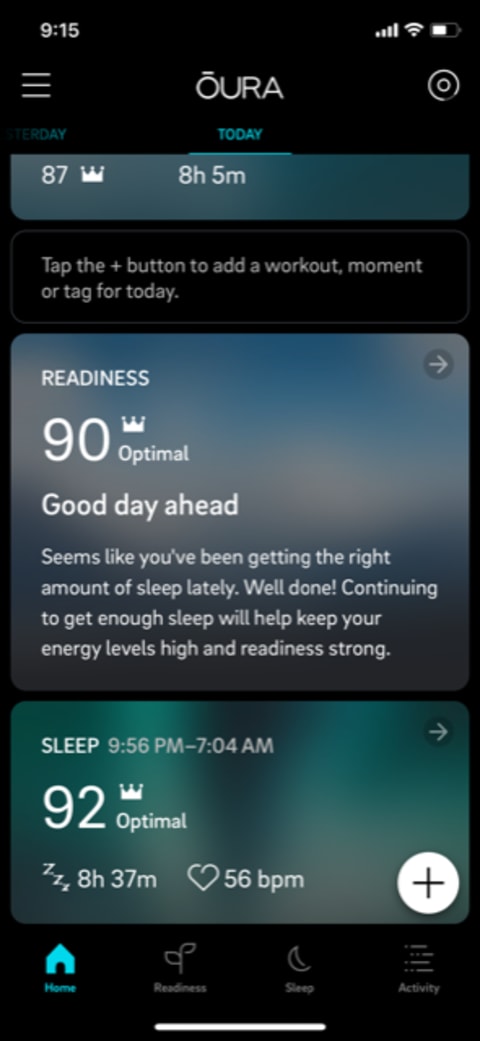
Or consider the advent of continuous glucose monitoring (CGM), a wearable device that tracks blood sugar automatically every five to 15 minutes (depending on the brand). It then "sends the information to a smartphone, giving rapid feedback on how individual meals and food choices are affecting health," says Means, which may encourage healthy shifts in diet that are specific to each individual.
It's important to acknowledge that most of these wearables aren't medical devices—and they're not designed to replace your doctor. Instead, consider each micro-metric a piece of your overall well-being puzzle. Phil McClendon, the lead product manager for Garmin's consumer wellness products, explains this data is meant to give people a better sense of their own individual baseline. "We're not diagnosing anything; we're just giving them data they can take to their health care provider. It's a way of informing the customer."
John Moore, M.D., Ph.D., medical director at Fitbit, similarly explains that this data can help users keep a close eye on their well-being baseline, "which could indicate changes in their body (increased stress or fatigue) or environment (altitude, ambient temperature, or air quality) and may serve as an early warning system for signals of illness."
In fact, we've even seen these features come into play during our current pandemic. "Many trackers looking at heart rate, temperature, oxygen saturation, and physical movement have already been studied in relation to predicting COVID-19, with promising results5," says Means. Oura, for example, worked alongside the University of California–San Francisco, and The Rockefeller Neuroscience Institute (RNI) to support front-line health care workers and even began collecting research for COVID illness detection, symptom profiles, and recovery. Whoop has also shared anecdotes about how their users have leveraged metrics (especially respiratory rate) to detect early symptoms of COVID-19.
How will "micro-tracking" evolve in 2021?
Considering how they've already begun to play a role in detecting disease, Means believes there could be even more synergy between doctors and wearables in the new year. "Our health care system needs to move away from a paradigm of largely reactionary treatment to a more proactive, preventive approach," she says. "Wearables—coupled with intelligent software—will be a valuable part of this movement."
Means also thinks we'll see more development of biowearables that track internal biomarkers, like CGMs. "Having a miniature laboratory on your arm is not science fiction; it's the near future."
Beyond trackers and wearables, Maloof says we're going to see more at-home labs and testing opportunities. "I'm pretty excited about devices like Vessel, which tests urine for health biomarkers. Basically our home bathroom is going to become our mini lab."
While the rise of micro-tracking is exciting and truly fascinating, it's also important to acknowledge that even devices on the "less expensive" side aren't accessible to everyone in our country—nor is everyone interested in wearing a device for body insights.
We also know it's crucial to listen to your own body and stay in tune with your senses—physically, emotionally, and spiritually. The tremendous amount of data these trackers and wearables produce can be overwhelming; in which case, take a break from your device or consider a more mindful relationship to it. These internal insights should be empowering and aid in understanding your own body rather than augmenting a disconnect.
"Understanding how you feel when something is going wrong or right is critical," says Brian MacKenzie, a human performance specialist, adding most people aren't in touch with these feelings. To help gain insight, sans tech, he recommends collecting your own data points by keeping a health journal. Take note of how you feel upon waking, after a workout, or even when you start to incorporate a breath practice.
Ultimately, how you decide to monitor your body and take care of your health is a personal choice—and there's no one right strategy. Technology will always be in flux, but prioritizing your well-being should always be a constant.
This is just one of the trends mbg is predicting will be huge in 2021. Check out our full list of the latest health & wellness trends.
5 Sources
Watch Next
Enjoy some of our favorite clips from classes
Enjoy some of our favorite clips from classes
What Is Meditation?
Mindfulness/Spirituality | Light Watkins
Box Breathing
Mindfulness/Spirituality | Gwen Dittmar
What Breathwork Can Address
Mindfulness/Spirituality | Gwen Dittmar
The 8 Limbs of Yoga - What is Asana?
Yoga | Caley Alyssa
Two Standing Postures to Open Up Tight Hips
Yoga | Caley Alyssa
How Plants Can Optimize Athletic Performance
Nutrition | Rich Roll
What to Eat Before a Workout
Nutrition | Rich Roll
How Ayurveda Helps Us Navigate Modern Life
Nutrition | Sahara Rose
Messages About Love & Relationships
Love & Relationships | Esther Perel
Love Languages
Love & Relationships | Esther Perel
What Is Meditation?
Box Breathing
What Breathwork Can Address
The 8 Limbs of Yoga - What is Asana?
Two Standing Postures to Open Up Tight Hips
How Plants Can Optimize Athletic Performance
What to Eat Before a Workout
How Ayurveda Helps Us Navigate Modern Life
Messages About Love & Relationships
Love Languages
Advertisement

This Little-Known Supplement Helps Women Sleep & Decreases Signs Of Depression
Molly Knudsen, M.S., RDN

This Little-Known Supplement Helps Women Sleep & Decreases Signs Of Depression
Molly Knudsen, M.S., RDN




